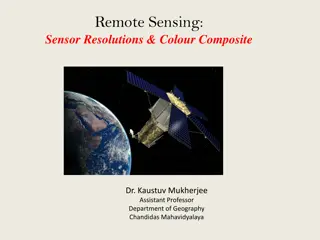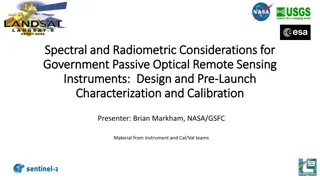Enhancing Robot Control in Neurosurgery through Force Sensing Integration
The project aims to improve the cooperative control of the Galen robot in neurosurgery by measuring and integrating tool-to-tissue forces. By sensing these forces, the system can enhance visual feedback, establish safety limits, evaluate surgical skills, and allow unbiased comparisons of techniques. Challenges include physician expertise with tool designs and sensor noise interference. The approach involves prototyping a tool sleeve, sensor testing, calibration, communication protocol development, UI creation, and safety testing. Deliverables include design documentation, force sensing tool holder, force data communication, ergonomic UI design, force measurement trials, and safety features integration. Dependencies involve acquiring new force sensors and accessing Galen UI for communication.
Download Presentation

Please find below an Image/Link to download the presentation.
The content on the website is provided AS IS for your information and personal use only. It may not be sold, licensed, or shared on other websites without obtaining consent from the author.If you encounter any issues during the download, it is possible that the publisher has removed the file from their server.
You are allowed to download the files provided on this website for personal or commercial use, subject to the condition that they are used lawfully. All files are the property of their respective owners.
The content on the website is provided AS IS for your information and personal use only. It may not be sold, licensed, or shared on other websites without obtaining consent from the author.
E N D
Presentation Transcript
Topic and Goal Current methodology:Cooperative control of robot for neurosurgery. For some applications it is useful to measure and control the tool-to-tissue forces as well. Goal: To sense these forces and integrate this data for better control of the Galen robot Uses: Visual Feedback Safety Limits Surgical Skill evaluation Unbiased comparison of surgical techniques
Mentors and Team Roles Mentors Roles Dr. Russell Taylor Galen Surgical: Paul Wilkening, Yunus Sevimli, David Levi Johns Hopkins Medicine: Francis Creighton, MD and Chris Razavi, MD Team Leader and Mechanical Design: Prasad Vagdargi Electronic Design: Brandon Tran & Nick Skacel Communications/Software: Nick Skacel Controls: Brandon Tran
Challenges Physicians gain expertise using preferred tool designs: spacing problems to maintain profile Frequent changing of drill bits Drill rotation frequency might interfere with sensing Minimal no. of sensors required, system analysis accordingly. Noise reduction
Approach Prototype tool sleeve, initial analysis Test sensors and its arrangement, redesign Calibration of tool forces with standard force sensors Develop communication protocols Develop UI and display data Test and move robot according to safety limits
Deliverables Minimum Expected Maximum Documentation: Design iterations, calibration procedure and UI Design and prototype force sensing tool holder Provide XYZ force sensing at the tooltip Communicate sensed forces at the tooltip to the Galen UI Design iteration for ergonomics Provide calibrated XYZ force sensing at the tooltip Test on phantom skulls and measuring forces Incorporate threshold based warning and motion control based on safety limits. Integrate the drill force as a measure for creating virtual fixtures.
Dependencies Dependency Status Order for new force sensors, DAQ board Completed (2 have arrived, waiting for more) Backup: Work with ATI force sensors Access to Galen UI for DAQ to Robot communication In Progress - will contact Paul Wilkening Access to 3D printing facilities Completed
Management Plan Weekly Galen meeting Currently Friday at 10 AM (subject to change) Includes feedback from Dr. Razavi Team meeting times: Bi-weekly Thursday after class Sunday for an extended time
Milestones Initial Prototype Manufacture Feb. 25 Order/Test Sensors Mar. 1 Test rig development Mar. 10 Calibration and Analysis April 1 UI design April 12 Safety limits testing April 28 Presentation May 12
Reading List Y. Hu, H. Jin, L. Zhang, P. Zhang and J. Zhang, "State Recognition of Pedicle Drilling With Force Sensing in a Robotic Spinal Surgical System," in IEEE/ASME Transactions on Mechatronics, vol. 19, no. 1, pp. 357-365, Feb. 2014. P. Kazanzides, J. Zuhars, B. Mittelstadt and R. H. Taylor, "Force sensing and control for a surgical robot," Proceedings 1992 IEEE International Conference on Robotics and Automation, Nice, 1992, pp. 612-617 vol.1. Force of Cochlear Implant Electrode Insertion Performed by a Robotic Insertion Tool: Comparison of Traditional Versus Advance Off-Stylet Techniques, Daniel Schurzig, Robert J. Webster III, Mary S. Dietrich, and Robert F. Labadie, Otology & Neurotology, 2010























